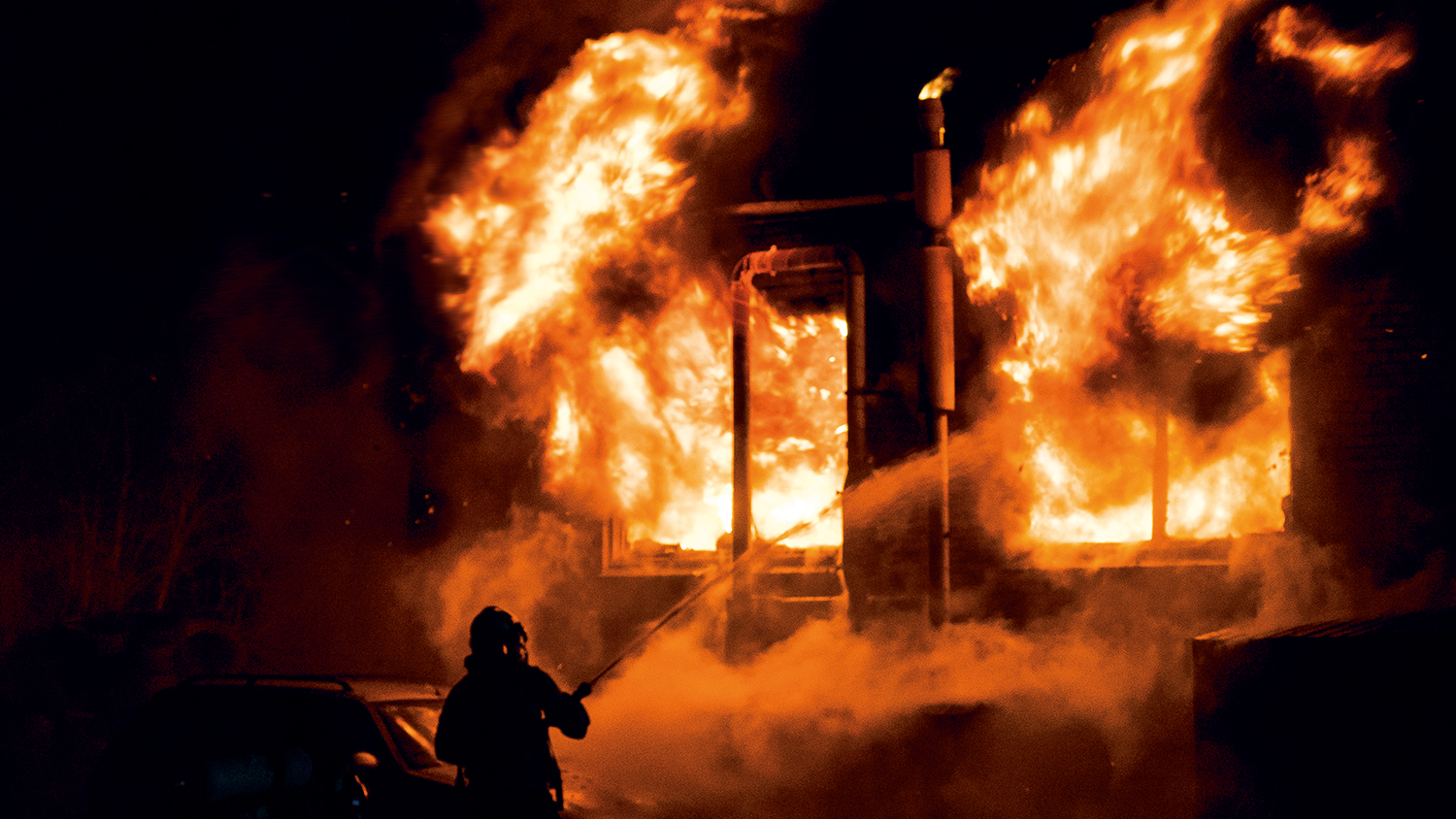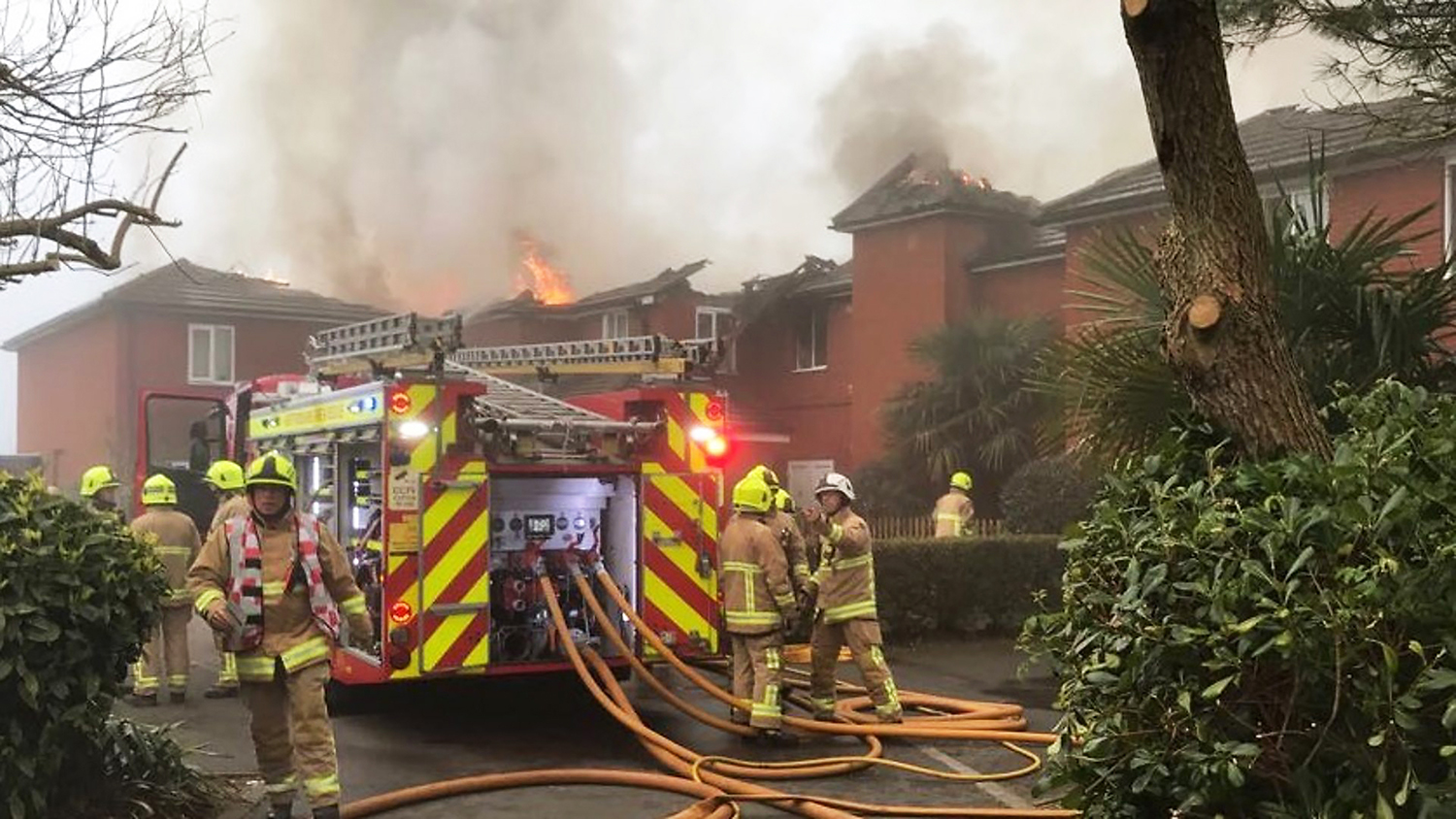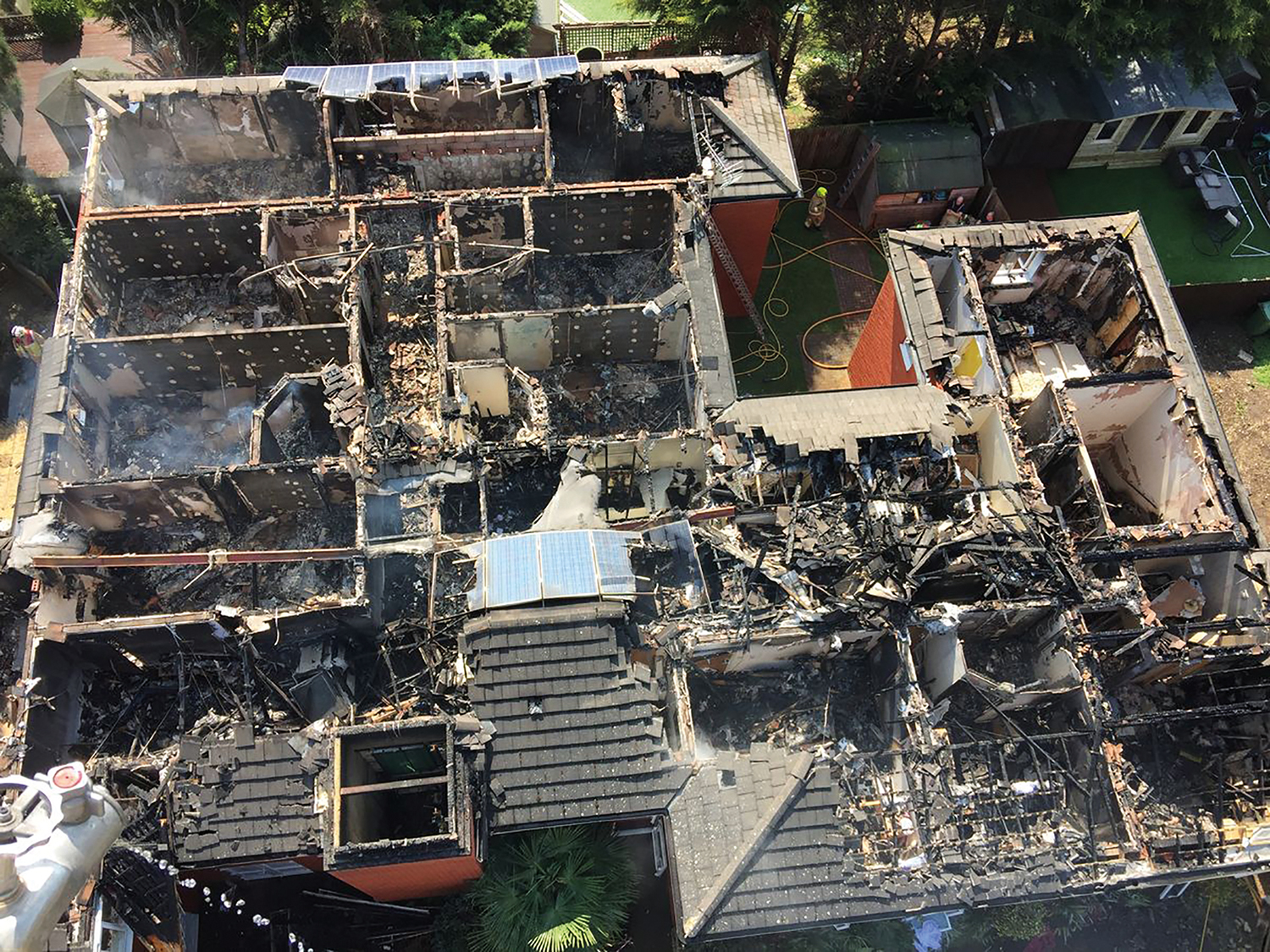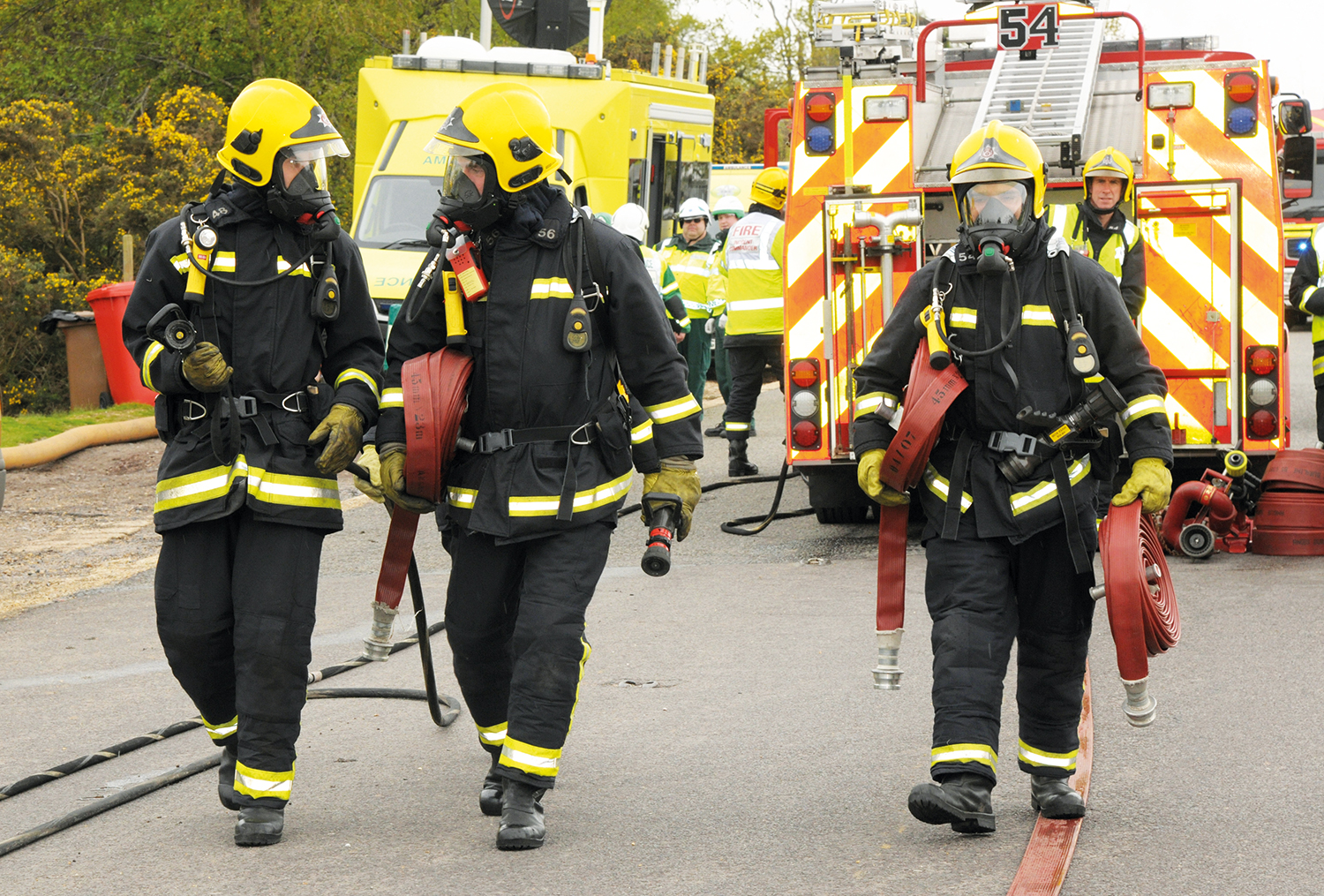
In April 2017, FCIOB Steven Miles lost his mother-in-law in a fire at Newgrange Care Home in Hertfordshire. Since then, he and his wife Claire have been campaigning to change the regulations on fire safety in care homes. Will Mann hears their story.
Newgrange Care Home on Cadmore Lane in Cheshunt, Hertfordshire, was built in 1996. Set across two storeys, with a roof space, it was occupied by 35 residents on 8 April 2017.
At 5.51am that morning, Hertfordshire Fire & Rescue Service received an emergency call. There was a fire at the care home. It had started in a first-floor linen cupboard, caused by overheating in the electrical wiring at ceiling level. The fire quickly spread, accelerated by inadequate compartmentation in the building’s roof space.
Just six minutes after the call, fire engines arrived on scene and firefighters began tackling the fire and evacuating the residents from inside the burning building. Many of the residents were immobile and included five centenarians. In total 12 fire engines were involved in the operation. Using breathing apparatus, firefighters evacuated most of the first-floor bedrooms by carrying the residents downstairs. Residents were protected them from the burning debris falling from above, by firefighters’ own bodies.
One of the residents at Newgrange was Daphne Holloway. Her daughter Claire and son-in-law Steven Miles – an experienced construction professional and a Fellow of the Chartered Institute of Building – were out that morning.
Transcript of Newgrange Care Home call to Hertfordshire Fire & Rescue Service
5.51am, 8 April 2017
Fire service: “Fire service, what’s your emergency?”
Caller: “Hi, we’ve got fire in the building.”
Fire service: “Yes, what’s the address?”
Caller: “Cadmore Lane. Newgrange Care Home. In Cheshunt.”
Fire service: “There’s a fire in the building?”
Caller: “Yes.”
Fire service: “Have you evacuated?”
Caller: “We’re going to evacuate now. But we have residents in the building as well.”
Fire service: “Is there any sign of fire, any smoke?”
Caller: “There’s a smell of fire on the stairs.”
Fire service: “I’ve sent the fire engines on their way.”
Claire Miles: “When we returned home around 10.30am there was a message on our answer phone. It was from one of Mum’s friends saying they’d heard about a fire at Newgrange and enquiring after her welfare.
“We drove straight to Cheshunt, but we could see ahead there was an enormous fire. It was like a scene from a film. There were groups lining the pavement and I kept thinking: ‘Surely care homes cannot catch fire?’
Residents unaccounted for
“Cadmore Lane was cordoned off. I spoke to a policewoman and explained that Mum was in Newgrange. We were joined by a police family liaison officer who explained that, at that stage, two residents were unaccounted for. One of the rooms affected was my mother’s bedroom.”
The fire service rescued 33 residents from the care home, three of whom needed hospital treatment for burns or the effects of breathing in smoke. They were unable to find Ivy Spriggs, 91, and Daphne Holloway, 88. The body of Claire’s mother was eventually identified using dental records.
Claire Miles: “I understand the Newgrange policy was to ‘stay put’. I visited Mum nearly every day of her 18-month stay and, where I signed in and out, there was a fire poster on the wall above. In exactly the right place of course. I glanced at it, but I didn’t ever give fire a second thought. Mum was so well cared for at Newgrange that I took her safety for granted.
“The firefighters were incredibly brave. They did everything they could, and put their lives at great risk. Thirty-three lives were saved in those dreadful circumstances which is a wonderful achievement. Seven of the firefighters were awarded the Queen’s Gallantry Medals.”
Preparations began for a criminal investigation and the coroner’s inquest into the two deaths.
Change to fire regulations
Steven Miles: “I thought from the outset that something was not right. The fire had spread so rapidly. We both believed the best legacy for Claire’s Mum and for Ivy would be a change to the fire regulations that would ensure a tragedy like this could never happen again.”
On 14 June 2017, the fire at Grenfell Tower in West London resulted in 72 deaths. Fire safety now topped the news agenda.

Claire Miles: “Rt Hon Robert Halfon is our local MP (Harlow, Essex). We visited him at his surgery. He was very sympathetic and said he would speak to Harlow Council about fire safety in care homes.”
Prompted by Halfon, Essex Fire & Rescue began a series of fire inspections across all care homes in the county. Essex Fire & Rescue inspected 152 care homes during 2018-19 and reported that more than a third – 51 – were unsatisfactory. The London Fire Brigade inspected 177 care homes in the same period and said that more than half needed to make fire safety improvements.
Meanwhile, the criminal trial at St Albans Crown Court was progressing. In May 2019, the owner of the Newgrange care home, Nicholas Meyer, pleaded guilty to five fire safety offences. His company, Newgrange of Cheshunt, was fined £175,000, plus prosecution costs.
The families of Ivy Spriggs and Daphe Holloway issued a joint statement after the trial: “The circumstances in which they [Spriggs and Holloway] lost their lives were tragic, even more so by the fact that serious failings by the care home, in respect to their management of fire risk, were found by the fire service.
“No words can describe how distraught the families feel after being critically let down by the Newgrange Care home who were trusted to care for their loved ones.
Clear message sent
“The only glimmer of a silver lining to this terrible incident is that other care establishments will be sent a clear message that fire safety must be taken seriously as the consequences of not doing so can prove tragically fatal.”
The coroner’s inquest was due to begin later in 2019, but it was postponed because key witnesses were unavailable. Then, in March 2020, the pandemic arrived. The inquest would not begin until February 2022, at Hertford County Hall.

At the seven-day inquest, the senior coroner for Hertfordshire, Geoffrey Sullivan, heard evidence from witnesses from Hertfordshire Fire & Rescue Service and an independent fire safety expert. His report concluded that Holloway and Spriggs had died from fourth degree burns.
Sullivan sent his report to Michael Gove, then secretary of state for the Department of Levelling Up, Housing and Communities (DLUHC), on 10 February 2022. Sullivan informed Gove that all witnesses had “expressed concern that sprinkler systems are not a mandatory requirement for care homes” where residents have limited mobility. He added that he was surprised the definition of higher risk buildings, in the Building Safety Act, focused on height and did not “take into account the risk brought about by the inability of certain occupants to self-evacuate from a building.”
Preventing future deaths
Claire Miles also wrote to Gove, on 16 February 2022, offering her perspective on the Newgrange tragedy. Her letter concluded: “If change is brought about to try to prevent future deaths occurring in similar circumstances, my dear mother will not have died in vain. I would be happy to meet you or do anything I can to move things forward.”
Gove wrote back to Sullivan on 7 April 2022. He said the department was “looking closely at further potential fire safety measures in housing for vulnerable residents… It will identify the current evidence for the effectiveness of sprinklers.”
On the definition of higher-risk buildings, Mr Gove said his department had carried out an “extensive consultation” and that “therefore, we think the current definition is correct”.

“The definition of higher-risk building… followed extensive consultation… Therefore, we think the current definition is correct, and as such we do not propose to make amendments at this time.”
Claire Miles: “Most care homes are just two storeys. Many residents are not mobile and can’t self-evacuate. Some have dementia. They become disorientated and confused easily and smoke is blinding. So why are care homes not ‘higher risk’?”
In May 2022, Claire was approached by the National Fire Chiefs Council (NFCC), which was urging the government to improve sprinkler regulations in England. Its ‘Think Sprinkler’ campaign calls for all the 17,000 care homes in the UK to be fitted with sprinkler systems, bringing England in line with Scotland and Wales.
Claire Miles: “I was then, and remain, in awe of the firefighters who risked life and limb for the residents at Newgrange. This is about protecting firefighters as well. So, along with Ivy’s daughter Carole Murray, I agreed to support the NFCC’s campaign.”
No sprinklers
Newgrange Care Home was rebuilt after the fire. Against the recommendation of Hertfordshire Fire and Rescue Service, no sprinklers were installed, though the rebuild did meet the required fire safety regulations. CM contacted the care home’s owner, Nicholas Meyer, to ask if there are any plans to fit sprinklers in future.
Steven Miles: “My concern is that unless a building project is designated as being ‘higher risk’, the fire strategy is not always adequately designed and costed at tender stage, particularly with regard to design and build procurement.
“It is clear from the coroner’s report dated 10 February 2022 that the ‘higher risk’ designation should be applied to care homes of any height, in addition to making sprinkler systems a mandatory requirement. This would also enable the local fire and rescue service to be involved at the planning stage which is a critical point of the construction process.

“Things have changed since Grenfell. Fire safety issues are being focused on. I fully support the CIOB for the work they have done to increase scrutiny of building safety and quality. My view as a construction professional is that you should call out anything you see in a building that is dangerous, during construction or occupation.”
On 8 September 2022, Claire Miles wrote to Michael Gove’s replacement at DLUHC, Simon Clarke. She recounted the tragedy of April 2017 and her hope for change to the regulations on sprinklers and higher-risk buildings.
Hope of a breakthrough
She concluded: “Mr Gove’s letter to my MP gives me some encouragement that change may come to help ensure that such an avoidable tragedy is not repeated – but all this is taking time. Mr Clarke, you are clearly a very busy man with many demands on your time, but I would welcome a conversation or meeting with you at your earliest convenience.”
In October 2022, Gove returned to his old position at DLUHC. Claire Miles was contacted on 27 October, to ask if she wished to extend her invitation to meet with Clarke to his successor. She replied immediately that she did. She is hopeful that a meeting with Gove may provide the breakthrough she and Steven have been campaigning for.
*After CM went to press, DLUHC announced the opening of a consultation on recommending sprinklers in care homes, regardless of height.
Michael Gove image: Richard Townshend
Comments
Comments are closed.












It’s obvious that sprinklers are required in Care Homes, with perhaps an opt out for single storey facilities with fewer than a certain number of residents.